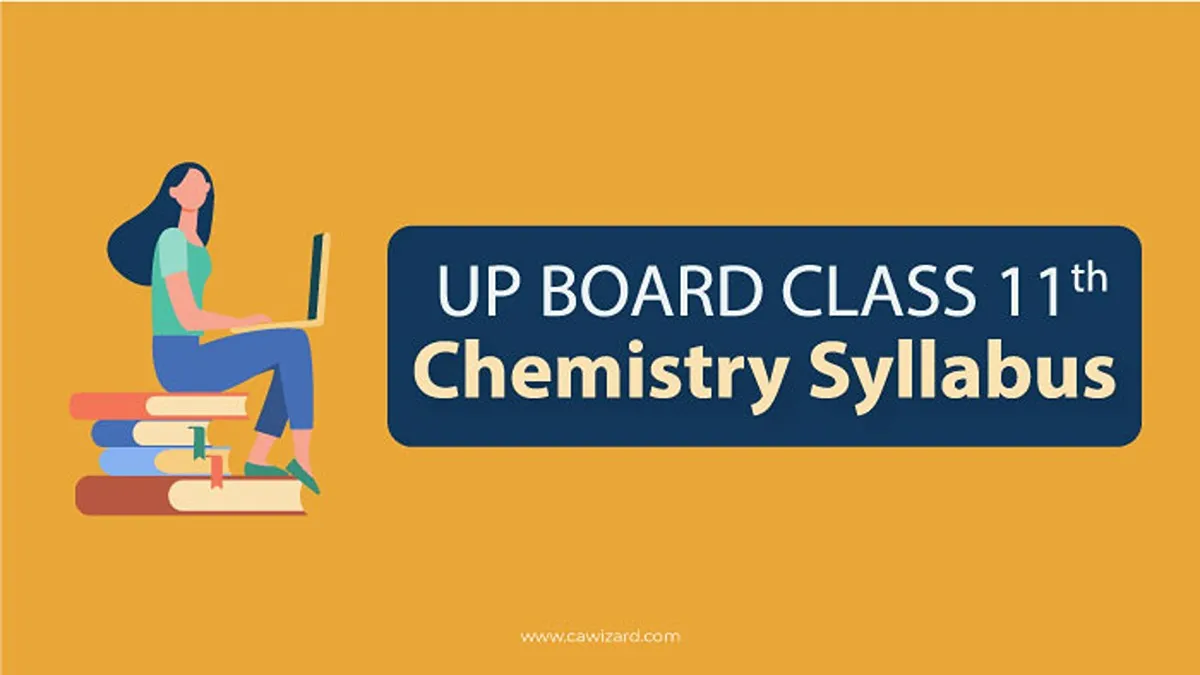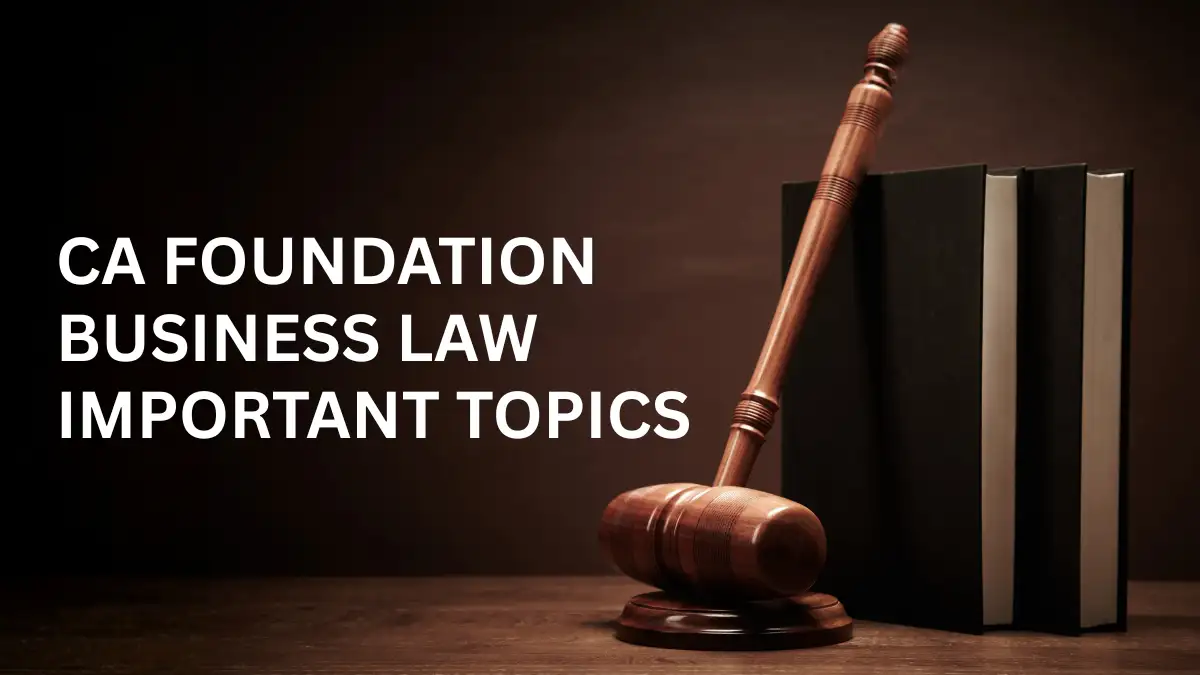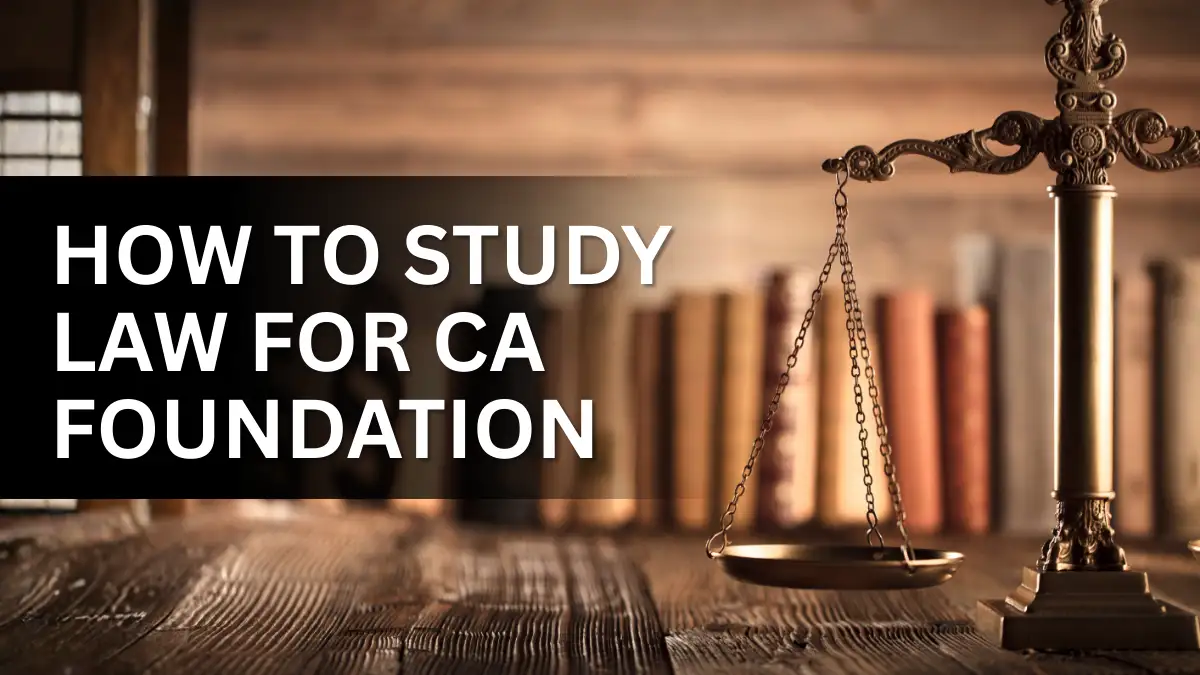UPMSP has issued the new UP Board Class 11 Chemistry Syllabus for the academic year 2023-24. In this article on CA Wizard, we have shared the new syllabus for Class 11 Chemistry subject of UP Board. We have separated the chapter-wise topics that are still there in the syllabus and those deleted from the syllabus. So you can start marking them in your textbooks as you read them here.
On CA Wizard, we also provide resources for all class 11 and class 12 students of all education boards. You can find the latest syllabus, sample papers, results announcements, and updates. We offer all these valuable resources to help you ace all your exams and lead a successful career. You can get guidance regarding the best career options after senior secondary classes.
We can help you gain all the information on the best career option- Chartered Accountancy and become a successful CA in India.
Marking Scheme as per Latest UP Board Class 11 Chemistry Syllabus (in English)
Theory
| Unit No. | Title | Marks |
| I | Some Basic Concepts of Chemistry | 5 |
| II | Structure of atom | 6 |
| III | Classification of elements and periodicity in properties | 5 |
| IV | Chemical bonding and molecular structure | 5 |
| V | States of Matter: Gases and Liquids | 5 |
| VI | Chemical Thermodynamics | 4 |
| VII | Equilibrium | 6 |
| VIII | Redox reactions | 5 |
| IX | Hydrogen | 3 |
| X | s block elements | 5 |
| XI | p block elements | 6 |
| XII | Organic chemistry: Some basic principles and techniques | 7 |
| XIII | Hydrocarbons | 8 |
| TOTAL | 70 |
Practicals
S.No. | Experiment | Marks |
| 1 | Content-based experiment | 4 |
| 2 | Volumetric analysis | 8 |
| 3 | (a) Salt analysis
(b) Detection of elements in organic compounds. | 6
2 |
| 4 | Project work and Class record | 5 |
| 5 | Viva | 5 |
| TOTAL | 30 |
UP Board Class 11 Chemistry Syllabus in English
You can download the Class 11 Chemistry Syllabus (English medium) from the link available below.
Download UP Board Class 11 Chemistry Syllabus and Marking Scheme(English)
Unit I: Some Basic Concepts of Chemistry
Topics covered in Syllabus
General Introduction: Importance and scope of Chemistry.
Atomic and molecular masses, mole concept and molar mass, percentage composition, empirical and molecular formula, chemical reactions, stoichiometry, and calculations based on stoichiometry.
Deleted Topics
Nature of matter, laws of chemical combination, Dalton’s atomic theory: the concept of elements, atoms and molecules.
Unit II: Structure of Atom
Topics covered in Syllabus
Bohr’s model and its limitations, the concept of shells and subshells, dual nature of matter and light,
de Broglie’s relationship, Heisenberg uncertainty principle, the concept of orbitals, quantum numbers, shapes of s, p and d orbitals, rules for filling electrons in orbitals – Aufbau principle, Pauli’s exclusion principle and Hund’s rule, electronic configuration of atoms, the stability of half-filled and completely filled orbitals.
Deleted Topics
Discovery of Electron, Proton, and Neutron, atomic number, isotopes, and isobars. Thomson’s model and its limitations. Rutherford’s model and its limitations.
Unit III. Classification of Elements and Periodicity in Properties
Topics covered in Syllabus
Modern periodic law and the present form of the periodic table, periodic trends in properties of elements -atomic radii, ionic radii, inert gas radii, Ionization enthalpy, electron gain enthalpy, electronegativity, valency. Nomenclature of elements with atomic numbers greater than 100.
Deleted Topics
Significance of classification, a brief history of the development of the periodic table.
Unit IV. Chemical Bonding and Molecular Structure
Topics covered in Syllabus
Valence electrons, ionic bond, covalent bond, bond parameters, Lewis structure, the polar character of a covalent bond, the covalent character of an ionic bond, valence bond theory, resonance, the geometry of covalent molecules, VSEPR theory, the concept of hybridization, involving s, p and d orbitals, and shapes of some simple molecules, the molecular orbital theory of homonuclear diatomic molecules (qualitative idea only), Hydrogen bond.
Deleted Topics
No topics have been removed from this chapter.
Unit V. States of Matter: Gases and Liquids
Topics covered in Syllabus
Three states of matter, intermolecular interactions, types of bonding, melting and boiling points, the role of gas laws in elucidating the concept of the molecule, Boyle’s law, Charles law, Gay Lussac’s law, Avogadro’s law, ideal behavior, empirical derivation of gas equation, Avogadro’s number, ideal gas equation and deviation from ideal behavior
Deleted Topics
Liquefaction of gases, critical temperature, kinetic energy and molecular speeds (elementary idea), Liquid State- vapor pressure, viscosity, and surface tension (qualitative idea only, no mathematical derivations)
Unit VI. Chemical Thermodynamics
Topics covered in Syllabus
Concepts of System and types of systems, surroundings, work, heat, energy, extensive and intensive properties, state functions.
The first law of thermodynamics -internal energy and enthalpy, measurement of U and H, Hess’s law of constant heat summation, enthalpy of bond dissociation, combustion, formation, atomization, sublimation, phase transition, ionization, solution, and dilution. The second law of Thermodynamics (brief introduction)
Introduction of entropy as a state function, Gibb’s energy change for spontaneous and nonspontaneous processes.
Third law of thermodynamics (brief introduction).
Deleted Topics
Heat capacity and specific heat, criteria for equilibrium.
Unit VII. Equilibrium
Topics covered in Syllabus
Equilibrium in physical and chemical processes, dynamic nature of equilibrium, the law of mass action, equilibrium constant, factors affecting equilibrium – Le Chatelier’s principle, ionic equilibrium- ionization of acids and bases, strong and weak electrolytes, degree of ionization, ionization of polybasic acids, acid strength, the concept of pH, buffer solution, solubility product, common ion effect (with illustrative examples).
Deleted Topics
Hydrolysis of salts (elementary idea), Henderson Equation
Unit VIII. Redox Reactions
Topics covered in Syllabus
Concept of oxidation and reduction, redox reactions, oxidation number, balancing redox reactions, in terms of loss and gain of electrons and change in oxidation number.
Deleted Topics
Applications of redox reactions
Unit IX. Hydrogen
Topics covered in Syllabus
Position of hydrogen in the periodic table, occurrence, isotopes, hydrides-ionic covalent and interstitial; physical and chemical properties of water, heavy water, hydrogen as a fuel.
Deleted Topics
Preparation, properties, and uses of hydrogen, hydrogen peroxide -preparation, reactions and structure and use.
Unit X. s -Block Elements
Topics covered in Syllabus
Group 1 and Group 2 Elements
General introduction, electronic configuration, occurrence, anomalous properties of the first element of each group, diagonal relationship, trends in the variation of properties (such as ionization enthalpy, atomic and ionic radii), trends in chemical reactivity with oxygen, water, hydrogen, and halogens, uses.
Deleted Topics
Preparation and Properties of Some Important Compounds: Sodium Carbonate, Sodium Chloride, Sodium Hydroxide and Sodium Hydrogen carbonate, Biological importance of Sodium and Potassium. Calcium Oxide and Calcium Carbonate and their industrial uses, biological importance of Magnesium and Calcium.
Unit XI. Some p -Block Elements
Topics covered in Syllabus
General Introduction to p -Block Elements
Group 13 Elements: General introduction, electronic configuration, occurrence, a variation of properties, oxidation states, trends in chemical reactivity, anomalous properties of the first element of the group, Boron – physical and chemical properties.
Group 14 Elements: General introduction, electronic configuration, occurrence, a variation of properties, oxidation states, trends in chemical reactivity, anomalous behavior of first elements. Carbon-catenation, allotropic forms, physical and chemical properties.
Deleted Topics
Elements of group 13 – Some important compounds: Borax, Boric acid, Boron Hydrides, Aluminium: Reactions with acids and alkalis, uses.
Elements of group 14 – Carbon: uses of some important compounds: oxides, Important compounds of Silicon and a few uses: Silicon Tetrachloride, Silicones, Silicates and Zeolites, their uses.
Unit XII. Organic Chemistry: Some Basic Principles and Techniques
Topics covered in Syllabus
General introduction, classification, and IUPAC nomenclature of organic compounds. Electronic displacements in a covalent bond: inductive effect, electromeric effect, resonance, and hyperconjugation. Homolytic and heterolytic fission of a covalent bond: free radicals, carbocations, carbanions, electrophiles and nucleophiles, types of organic reactions.
Deleted Topics
Methods of purification, qualitative and quantitative analysis
Unit XIII. Hydrocarbons Environmental Chemistry
Topics covered in Syllabus
Classification of Hydrocarbons
Aliphatic Hydrocarbons:
- Alkanes – Nomenclature, isomerism, conformation (ethane only), physical properties, chemical reactions
- Alkenes – Nomenclature, the structure of double bond (ethene), geometrical isomerism, physical properties, methods of preparation, chemical reactions: addition of hydrogen, halogen, water, hydrogen halides (Markovnikov’s addition and peroxide effect), ozonolysis, oxidation, mechanism of electrophilic addition.
- Alkynes – Nomenclature, the structure of triple bond (ethyne), physical properties, methods of preparation, chemical reactions: acidic character of alkynes, addition reaction of – hydrogen, halogens, hydrogen halides, and water.
Aromatic Hydrocarbons:
Introduction, IUPAC nomenclature, benzene: resonance, aromaticity, chemical properties: mechanism of electrophilic substitution. Nitration, sulphonation, halogenation, Friedel Crafts alkylation and acylation, directive influence of the functional group in monosubstituted benzene. Carcinogenicity and toxicity.
Deleted Topics
Free radical mechanism of halogenation, combustion, and pyrolysis.
Unit XIV. Environmental Chemistry
Deleted Topics
Environmental pollution – air, water, and soil pollution, chemical reactions in the atmosphere, smog, major atmospheric pollutants, acid rain, ozone and its reactions, effects of depletion of the ozone layer, greenhouse effect, and global warming- pollution due to industrial wastes, green chemistry as an alternative tool for reducing pollution, strategies for control of environmental pollution
*The complete chapter 14 is removed from the UP Board Class 11 Chemistry Syllabus for the March 2024 annual exam.
Practical
The syllabus for practicals is also revised and reduced for the 2023-24 exams. The topics that are coming and that are removed are given below:
Topics Covered
- Basic Laboratory Techniques
- Cutting glass tube and glass rod
- Bending a glass tube
- Drawing out a glass jet
- Boring a cork
- Characterization and Purification of Chemical Substances
- Determination of the melting point of an organic compound.
- Determination of boiling point of an organic compound.
- Crystallization of impure samples of any one of the following: Alum, Copper Sulphate, Benzoic Acid.
- Quantitative Estimation
- Using a mechanical balance/electronic balance.
- Preparation of standard solution of Oxalic acid.
iii. Determination of strength of a given solution of Sodium hydroxide by titrating it against
standard solution of Oxalic acid.
- Preparation of standard solution of Sodium carbonate.
- Determination of strength of a given solution of hydrochloric acid by titrating it against
standard Sodium Carbonate solution.
- Qualitative Analysis
- a) Determination of one anion and one cation in a given salt
Cations- Pb2+, Cu2+, As3+, Al3+, Fe3+, Mn2+, Ni2+, Zn2+, Co2+, Ca2+, Sr2+, Ba2+, Mg2+, NH4
Anions – (CO3) 2- , S2- , NO2 – , SO3 2- , SO2- 4, NO3 – , Cl- , Br- , I- , PO4 3- , C2O 2- 4, CH3COO- (Note: Insoluble salts excluded)
- b) Detection of -Nitrogen, Sulphur, Chlorine in organic compounds.
- c) PROJECTS:
Scientific investigations involving laboratory testing and collecting information from other sources. A few suggested Projects
- Checking the bacterial contamination in drinking water by testing sulfide ion
- Study of the methods of purification of water
- Testing the hardness, presence of Iron, Fluoride, Chloride, etc., depending upon the regional variation in drinking water and study of causes of the presence of these ions above the permissible limit (if any).
- Investigation of the foaming capacity of different washing soaps and the effect of the addition of Sodium carbonate on it
- Study the acidity of different samples of tea leaves.
- Determination of the rate of evaporation of different liquids
- Study the effect of acids and bases on the tensile strength of fibers.
- Study of acidity of fruit and vegetable juices.
Deleted Topics
- Experiments based on pH
- a) Any one of the following experiments:
- Determination of pH of some solutions obtained from fruit juices, solution of known and varied concentrations of acids, bases and salts using pH paper or universal indicator.
- Comparing the pH of solutions of strong and weak acids of the same concentration.
- Study the pH change in the titration of a strong base using universal indicators.
- b) Study the pH change by common-ion in case of weak acids and weak bases.
- Chemical Equilibrium
One of the following experiments:
- a) Study the shift in equilibrium between ferric ions and thiocyanate ions by
increasing/decreasing the concentration of either of the ions.
- b) Study the shift in equilibrium between [Co(H2O)6] 2+ and chloride ions by changing the concentration of either of the ions.
Marking Scheme as per Latest UP Board Class 11 Chemistry Syllabus (in Hindi)
Theory
| इकाई | शीर्षक | पूर्णांक |
| I | रसायन की कुछ मूल अवधारणाऐं | 5 |
| II | परमाणु संरचना | 6 |
| III | तत्वों का वर्गीकरण और गुणधर्मों की आवर्तिता | 5 |
| IV | रासायनिक आबंधन एवं आण्विक संरचना | 5 |
| V | द्रव्य की अवस्थायें- गैस और द्रव्य | 5 |
| VI | ऊष्मागतिकी | 4 |
| VII | साम्यावस्था | 6 |
| VIII | रेडाक्स अभिक्रिया | 5 |
| IX | हाइड्रोजन | 3 |
| X | S ब्लॉक के तत्व | 5 |
| XI | P ब्लॉक के तत्व | 6 |
| XII | कार्बनिक रसायन कुछ मूल सिद्धान्त और तकनीके | 7 |
| XIII | हाइड्रोकार्बन | 8 |
| योग | 70 |
Practicals
| इकाई | परीक्षा में मूल्यांकन कीयोजना | पूर्णांक |
| 1 | विषय वस्तु आधारित प्रयोग | 4 |
| 2 | आयतनमितीय विश्लेषण | 8 |
| 3 | (क) लवण विश्लेषण
(ख) कार्बनिक यौगिकों में तत्त्व का विश्लेषण | 6
2 |
| 4 | कक्षा रिकॉर्ड तथा प्रोजेक्ट कार्य | 5 |
| 5 | मौखिक परीक्षा | 5 |
| योग | 30 |
UP Board Class 11 Chemistry Syllabus in Hindi
The UP Board Class 11 Chemistry Syllabus is also available in Hindi Medium. You can download the Chemistry syllabus (in Hindi) from the link available below. The new marking scheme is also available in Hindi in the PDF file.
Download UP Board रसायन विज्ञान पाठ्यक्रम कक्षा 11
The PDF file has the syllabus for all subjects, so you can directly jump to Pages 83-37 for the chemistry syllabus.
How to prepare the UP Board Class 11 Chemistry Syllabus?
Here are some tips for you to improve your preparation for the class 11 chemistry exam:
The formulae, diagrams, equations are important in the chemistry paper, so you must be very attentive while learning and writing them.
Next, the processes, experiments, and reactions are also important. You need to learn the concepts behind them.
Mark the important points in every chapter. Solve practice questions after every chapter and highlight difficult questions. These will help you in revisions.
Download sample papers for revision tests.
Frequently Asked Questions
Q1. How much syllabus is reduced from UP Board Class 11 Chemistry subject?
Ans. UP Board has deleted approximately 30% of the syllabus in Chemistry and all other subjects.
Q2. Which topics are removed from the UP Board class 11 chemistry syllabus?
Ans. The complete list of removed portions from the class 11 chemistry syllabus is given in this article.
Q3. Which book is best for UP Board Class 11 Chemistry Syllabus?
Ans. UP Board guidelines suggest using NCERT books for studies in class 11th.









